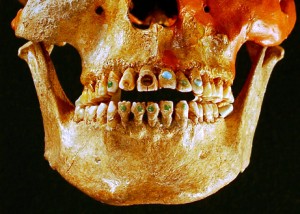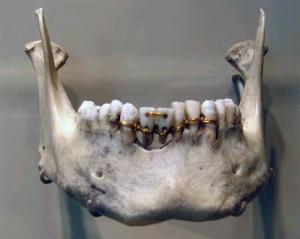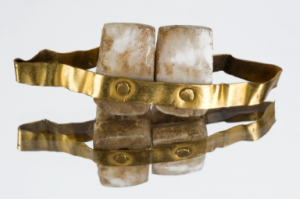Did you know that dentistry is an ancient art that has been practiced for at least 9,000 years? Archaeological findings have shown us the ingenuity that existed in the application of cosmetic and surgical dental practices during ancient times. Dating back to 7000 BC, the Indus Valley Civilization has produced evidence of the earliest form of dentistry; sites in Pakistan have exposed various dental practices that include curing tooth-related disorders with an ancient primitive tool, a bow and flint-tipped drill. In addition, a few years ago a 6,500 year-old-tooth that had a deep cavity stuffed with beeswax was uncovered, indicating that cavemen and women came up with some pretty clever ways to heal their dental injuries.
Modern dental practices of today could not have been developed without the ingenuity of our ancestors. Here are a few examples of ancient dentistry from across the globe:
Archaeological findings of Ancient Egypt have revealed dentistry methods that were highly advanced for its time. Ancient Egyptian medicine is one of the oldest documented; ancient text such as the Edwin Smith and the Ebers papyrus both acted as a manual, as they discussed the treatment of several dental ailments, as well as recipes that pertained to treating various oral issues. The Egyptians also had the knowledge on how to create an effective dental bridge. According to the British Dental Journal, evidence of this can be seen on ancient Egyptian skulls that have perfectly preserved dental bridge work still intact. In addition, the Egyptians possessed the ability to extract teeth, as well as successfully drain dental abscesses.
The Etruscans were industrious people who would test the boundaries in the medical field. They gathered their knowledge of dentistry through other civilizations such as the Egyptians, and developed the art of dentistry. Dating back to 500 BCE, true restorative dentistry began with the Etruscans, and they can probably be credited as the first people to take basic dental work to a more “artistic” level since the Etruscans would combine luxury with function. Dentures would often use human or animal teeth as artificial teeth, and were held together by gold bands. The Etruscans designed gold prosthetic and dental appliances that were meant to be a “decorative replacement”; they were the first to use gold in dentistry, and it was used to display wealth and status.
 Mayan Dentistry
Mayan Dentistry
The Mayans are credited with being the masters of cosmetic dentistry because they had the sophisticated knowledge of tooth anatomy. They were so sophisticated that they could probably be credited as the first to add “bling” to their teeth, and they could do so by chipping tiny holes out of the teeth without hitting the pulp inside the tooth. The Mayans also had the amazing ability to carve notches or grooves into a tooth, and place precious stones like Jade into them. They would attach these ornamental stones with an adhesive that they would create out of natural resins like plant sap, and was then mixed with other chemicals and crushed bones.


